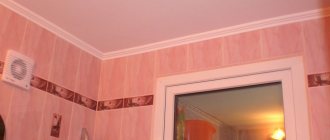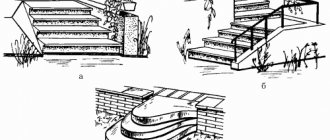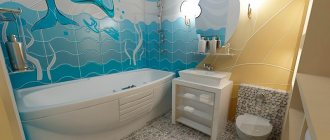How to whiten the seams between tiles? This question arises over time for any consumer who has tiled walls in the bathroom or kitchen. Numerous external factors affect the material and, naturally, a problem arises: the tiles are normal, and it is too early to do repairs, but the black tile joints spoil the appearance. In principle, this problem cannot be considered a big problem, and folk and modern chemical remedies can cope with it quite effectively.
A radical solution to the problem, or If the mold has penetrated too deeply
All the products described above can cope with dirt and mold, which has appeared relatively recently. If the fungus has penetrated deeply into the grout joints, you will have to act radically.
A scraper will help. Use it to clean off all the grout. Ideally, if mold has appeared in the bathroom, you should change the tiles or remove them, clean them of glue or fastening mortar and reinstall them. But there is not always time and opportunity for this. But we can’t just let things take their course. Mold is dangerous to health, especially for people prone to allergic reactions and asthmatic attacks.
The solution is to completely remove the grout and disinfect it. A hand or eclectic tool will help you remove the grout from the seams. It is better to entrust such work to professionals. If you decide to act on your own, be sure to wear a protective mask and goggles on your face, since the dust generated as a result of the work can get into your respiratory system and eyes.
Before cleaning the seams, they need to be softened with water and vinegar. After the grout has been completely removed, each seam must be carefully treated with special antifungal solutions, then rubbed again with a compound for them using a spatula.
Folk remedies
Home remedies can help bring back the cleanliness and freshness of your bathroom. They are effective, affordable and safe.
Baking soda
Baking soda will help to scrub tile joints:
- Wet the grout with warm water.
- Apply a generous layer of baking soda and leave for 10-15 minutes.
- Using an old toothbrush, carefully scrub all joints until you achieve the desired cleanliness.
- Apply a little baking soda to a large brush and go over the entire surface of the tile to remove plaque, mold and cosmetics.
- Wash the tiles with water.
Baking soda, water and an old toothbrush will help you clean tile joints quickly, effectively and safely.
Hydrogen peroxide
A pharmaceutical product can restore the whiteness of seams. To prepare the solution, take water and hydrogen peroxide in a 2:1 ratio. Treat the seams with the resulting product. The advantages of this method are efficiency, safety, and no need to wash off the solution from the tiles.
Vinegar + soda
Table vinegar is an effective remedy in the fight against mold, and in combination with soda it effectively copes with other contaminants.
Step-by-step cleaning instructions:
- Combine baking soda and vinegar in equal proportions.
- Apply the mixture to the joints and leave for 10 minutes.
- Use an old toothbrush to thoroughly clean the seams.
- Rinse off any remaining cleaning product with water and wipe the tiles dry.
Bleaching powder
In case of serious contamination, bleach comes to the rescue. It effectively removes dirt, disinfects, and makes tiles shiny. However, when working with the substance, follow safety precautions: wear gloves, a mask, and turn on the hood.
Cleaning procedure:
- Dilute bleach in water until you obtain a homogeneous liquid consistency.
- Using a spray bottle, apply the solution to the surface.
- Leave the product on for 5-7 minutes and then wash the tiles well.
After cleaning joints and tiles, be sure to wipe the surface with a dry cloth. This will make the tiles shiny and also prevent limescale deposits.
Vinegar and lemon
A solution based on soda, vinegar and citric acid will help to whiten the grout between the tiles. To prepare it, prepare the following components:
- 1 glass of water;
- 250 ml 9% vinegar;
- 6 tbsp. l. soda;
- 1 tbsp. l. citric acid.
Mix all ingredients until smooth. Using a sponge or stiff brush, apply the solution to the seams. After 20 minutes, re-treat to ensure that contamination is removed. When finished cleaning, wash the tiles with clean water.
Traditional methods
Since the time of grandmothers, some methods have been known for cleaning tiles and joints using simple products available in every home.
A mixture of soda, citric acid and vinegar
To clean, disinfect and lighten darkened grout, you need to mix six tablespoons of baking soda, two of crystalline citric acid (you can use the juice of one fresh lemon instead) and a quarter cup of vinegar. After the chemical reaction begins, the mixture is gently rubbed into the joints between the tiles.
To make the product work better, you can lightly scrub the dirty areas with an old toothbrush. Hands should be protected with rubber gloves. After 20 minutes, the remaining mixture should be washed off with warm water. Citric and acetic acid can greatly discolor paint, so it is better not to use them for dark and colored grout.
Ammonia
Using an alcohol solution of ammonia, you can not only defeat mold and dirt, but also get rid of soap scum and traces of water stone. For cleaning, dissolve 20 ml of alcohol in two liters of warm water. Using a sprayer, the liquid is evenly applied to the entire surface of the floor or walls. After 15 minutes, the remaining substance along with the dirt should be washed off with a fiber cloth.
Whiteness with soda
Sodium bicarbonate powder should be mixed with liquid bleach to form a thick paste. It is applied to the joints between the tiles with a silicone spatula or finger. The mixture should be left until completely dry and then washed off with water.
It is important to remember that bleaching components will easily discolor the pigments in colored grout.
Lemon, soda, mustard and toothpaste
You will need:
- soda - half a glass;
- freshly squeezed lemon juice - 50 ml, or three tablespoons. crystalline citric acid;
- one tsp toothpaste or powder;
- one tbsp dry mustard powder.
All ingredients must be dissolved in a liter of boiling water. Mix the resulting mixture well and apply it in an even layer to the tile joints. For greater effectiveness, you can rub the cracks with a brush or the edge of a sponge. After half an hour, rinse off any remaining product and dirt with warm water.
Steam cleaner
A jet of hot steam released by the device under high pressure washes both the tiles themselves and the joints without the use of any means.
This is the fastest, most environmentally friendly and effective way to get rid of mold, dirt and debris in hard to reach areas.
A portable steam generator is best suited for routine weekly cleaning, when dirt is still fresh and has not had time to be deeply absorbed into the surface.
How to clean various stains
In order to clean the joints between the tiles as efficiently as possible, it is worth considering the nature of the pollutants that cover them. Let's look at how to deal with pollution of various origins.
After renovation
The method discussed above using soda and vinegar will help to clean the seams between the tiles after repair. After removing dirt, you will need to thoroughly wash the walls or floor with plain water.
Fungus
Medical alcohol removes mold deposits well. To clean the joints between the tiles from fungus, you just need to apply the product to the space between the tiles with an old toothbrush. After fifteen to twenty minutes, remove the alcohol with clean water.
From nicotine
To clean the grout from traces of tobacco smoke, you will first need to mix any washing powder with ammonia in a small container to form a thick paste. The resulting mixture will quickly remove yellow nicotine stains from the space between the tiles.
We recommend: How to remove mold from wallpaper at home?
Removing rust
To clean the grout from rusty stains, you need to treat them with a two percent solution of oxalic acid. After fifteen to twenty minutes, thoroughly wash the cleaned surface. To achieve the best result, these steps will have to be done several times.
Important! It is better not to use this method when working with ceramics, so as not to damage the material. In such a situation, it is worth replacing the acid with a slurry obtained by mixing soda with water.
Old stains
If there are old stains on the grout that are useless to scrub off, you should paint over them with water-based emulsion. Just before applying it, you will need to thoroughly wash the surface and treat it with any antifungal compound.
How to whiten grout
Over time, the grout turns black. To return it to its original whiteness, you will need to treat the seams between the tiles with a heated solution of citric acid in water. To prepare it, you need to mix three liters of water with three packets of nutritional supplement. The exposure time is thirty to forty minutes.
How to clean seams from fungus and mold
If fungus and mold appear in tile joints, we act immediately and use a mixture based on bleach and ammonia . Mix 100 g and 50 g, respectively, pour them into water (1 l), and then spray on problem areas. Wait 30 minutes and wipe the surface with a damp cloth. Next, dissolve vinegar (100 g) in water (1 l) and wash the coating with the resulting cleaning agent.
You can also effectively clean the seams between tiles on the floor from fungus and mold: with ammonia solution, a mixture of soda with chlorine bleach, a steam cleaner and household chemicals.
How to clean with household chemicals?
Those who believe that to clean the joints between tiles can use any household chemical that comes their way are mistaken. This is a serious misconception.
So, to whiten seams on glossy glazed tiles, you cannot use products that contain acid . The result of such cleaning will be completely damaged, tarnished tiles.
Chlorine-containing products are only suitable for white tiles. Do not use dry abrasives for cleaning. Along with clean seams, the tiled surface will acquire deep scratches and abrasions.
When choosing a product for bleaching tile joints, pay special attention to the consistency of the composition. An excellent option is thick emulsions or sprays . They do not flow down the surface, but penetrate deeply into the grout and effectively fight mold and dirt.
Chlorine-containing products
TOP 3 popular chlorine-containing products:
MELLERUD
The cleaning product cleans tile joints as quickly and efficiently as possible. Depending on the degree of contamination, the composition is applied both pure and diluted (proportion 1:3).
Dirt is treated with MELLERUD and then thoroughly rubbed with a brush. After cleaning, rinse the surface with cool water.
The average cost is 530 rubles. (volume 500 ml). Read reviews here.
Domestos Professional Grout Cleaner
An effective grout cleaner. Suitable for all types of tiles. Does not flow down the surface. Removes dirt, grease, mold and mildew.
Directions for use: shake the bottle, apply the product to the dirt, rinse after five minutes . The average cost is 500 rubles. (volume 750 ml).
Clean seam MasterGood
An effective chlorine-based product will quickly remove plaque, mildew, mold and other contaminants from the space between tiles.
Simply spray the product onto the contaminated areas, wait twenty minutes, and then wipe with a soft, damp sponge.
The average cost is 240 rubles. (volume 500 ml). You will find reviews here.
Whitening Pencil
TOP 3 best pencils for whitening tile joints:
Bradex "Snowball"
In a matter of minutes it will return the lost whiteness to the yellowed space . The pencil contains special waterproof ink with a translucent effect. Covering the seams with a thick, dense, even layer, they cover any stains, traces of mold, or dirt.
The average cost is 200 rubles.
Grout-Aide
Convenient and easy to use. Just press lightly and draw a line of the required length with a pencil (there is enough paint for 50 meters of seams). Shake the marker well before use.
After drying, the snow-white line completely masks any dirt and traces of mold. The pencil is moisture resistant.
The average cost is 500 rubles.
Edding grout marker
Waterproof ink covers the space between the tiles in a dense layer, returning the seams to their original whiteness. Odorless, does not smear on the surface, dries quickly .
For best results, before use, place the pencil with the tip down, slightly pump it up and down, after which the marker is ready for use.
The average cost is 450 rubles. Reviews can be found here.
Oxygen bleach
TOP 3 effective oxygen bleaches:
Persol
Powdered bleach based on active oxygen will easily clean tile joints from any dirt.
The powder is diluted with water to a thick paste. Using a toothbrush, rub the cleaning mixture onto the seams, leave for a couple of hours, then rinse with warm water.
The average cost is 10 rubles. (weight 10 g). Read reviews here.
OTSU O2 Power
Oxygen bleach does not contain chlorine . Gently cleans surfaces between tiles made of natural materials (marble, granite). Removes stubborn dirt, eliminates mold and mildew.
The average cost is 440 rubles. (weight 1000 g). Reviews can be read here.
LION Clean Plus
An effective remedy for removing dirt from tile joints. Contains soda.
To clean, simply dilute dry bleach powder with water to form a thick paste, then thoroughly treat the stains. After waiting one to two hours, the surfaces between the tiles are washed off with warm water.
The average cost is 600 rubles. (weight 1.05 kg). Reviews can be found here.
Before applying any chemical to tile joints, it should be tested on a small, inconspicuous area.
Household chemicals for cleaning bathroom tiles
There is always high humidity in the bathroom, it is warm and damp, for this reason microorganisms develop as actively as possible, which leads to the appearance of fungus. If traditional methods do not help, you will have to use more effective and radical methods.
The most effective and inexpensive remedy is Pemolux. It is mixed with a small amount of water, applied to the seams, left for about 20 minutes and washed off with water. For effectiveness, it is recommended to walk over the surface with a brush.
The most popular means include:
- Pencil "Snowball". Modern tile grout cleaner. Destroys fungus, cleans dirt both on the tile itself and on the seams.
- Emulsion "Atlas Dolphin". After application, a thin film appears on the surface, which protects the seams from dirt and microorganisms. Apply the product immediately after cleaning the surface.
- Means "Mellerud". Not only removes dirt, but also refreshes color and removes plaque. To prepare the solution, mix 120 ml of the product with 8 liters of water and apply to the seams.
- Con. Removes odors, destroys lime, rust, and fights pollution.
- Silit Bang product removes rust, plaque, grease and soap stains.
- You can use “Mr. Muscle” - the product dissolves fats and mold. After application, you can simply rinse with water.
- Spray or cream “SIF”, capable of removing the most stubborn stains. The composition is applied to the surface for 10 minutes, then washed off.
A popular product is a melamine sponge, which quickly removes dirt and grease. After moistening, a special foam is formed: it penetrates the pores of the material, removing dirt and plaque. It’s easy to use: moisten the sponge with water and wipe the surface with it.
Before using them, you should carefully read the composition: do not use products that contain alkalis and acids. Such components can destroy the surface of the tiles and joints.
Such remedies are more effective than traditional methods, but at the same time they are more expensive - it is better to use them for complex stains.
When to change grout?
If the stains are too old or deeply ingrained into the material, and it is not possible to remove the fungus with any tools or means, you will have to replace the grout with a new one.
Before starting work, it is recommended to first soften the composition. Citric acid or soda is suitable for this. Among store-bought products, it is recommended to use Valo Clean and Litostrip formulations.
Then remove the old grout using a seam scraper (if you don’t have one, you can take a knife, spatula, or screwdriver). To remove material, run the tool along the center of the seam, then move at an angle from the edges. Carry out work with utmost care so as not to damage the tiles.
We recommend: How to wash bathroom tiles to make them shine?
Remains of the composition and dust are removed from the cleaned space using a vacuum cleaner, then a priming substance with an antiseptic effect is carefully applied. This is an important step to avoid the appearance of mold and mildew. Upon completion, it is necessary to dry the room and ventilate it.
An important point is the choice of composition. The first criterion for purchase is the width of the space between the tiles, since seams of different thicknesses require separate compounds. When purchasing, you should pay attention to the instructions for the drug on the packaging.
Mixtures are also distinguished by composition. The most popular are the following:
- Cement based. They are cheap, easy to use, and do not harden for a long time, which will allow you to adjust the seam if necessary. However, this material absorbs the seam well and cracks over time. It is better to choose formulations that contain hydrophobic additives, although they are more expensive.
- Made from epoxy resin. More modern grout mixtures. They harden quickly, cost more, but are not afraid of moisture and are resistant to fungi.
Grouts are available either in the form of a paste, which can be used immediately, or in the form of a powder - it is diluted with water (it is better to prepare a small portion, since after hardening the composition cannot be diluted again with water). When working with compounds, it is important to act strictly according to the instructions. The surface for applying the material must be dry.
To apply the grout, you will need a spatula, a damp sponge, and a grout float. Application instructions:
- Work begins from the corner, moving from top to bottom.
- The mixture is scooped up with a spatula and placed into the seam. The tool must be held at an angle of 30°.
- After 20 minutes, remove the remaining mixture with a damp sponge from the surface of the tile.
- Dry the composition for about 2 minutes.
If defects are found, they should be removed with fine sandpaper. When working, it is important to fill the seams 100%, otherwise cracks will appear on the material after drying. Do not dry the substance with a hairdryer - uneven drying will negatively affect the adhesion of the grout to the base.
A few days after application, it is necessary to cover the composition with a protective impregnation.
Prevention and protection of seams
Prevention is the best way to combat pollution. The main recommendations include:
- once a month treat the seams with soda or other cleaning agents;
- make sure that there is no moisture between the tiles and the plumbing - this will quickly lead to rust;
- It is necessary to immediately clean the seams in the bathroom from mold and mildew so that microorganisms do not spread.
In addition, it is worth cleaning regularly, avoiding moisture accumulation, and maintaining an optimal microclimate.
After thoroughly cleaning the tile joints, it is necessary to protect them using special compounds. They increase the water resistance of the material surface and prevent the appearance of fungus and mold:
- Water repellent. This impregnation creates a thin film, which is destroyed when severe mechanical damage is caused.
- Polymer varnish that creates a more reliable layer. The composition penetrates the material and strengthens the grout base. Moisture falling on the seams collects in drops without being absorbed into the surface.
- Acrylic or silicone sealant. Such compositions are used to protect the most vulnerable areas: seams at the corners of rooms, joints between tiles and bathtubs, and plumbing fixtures.
In order for impregnations to last a long time, it is important to follow the technology of their application. Thus, the products are applied at a temperature of +5...+30°C, maximum humidity - no more than 80%.
Apply protective impregnation using a thin brush, moving exactly along the seam. It is necessary to try to ensure that the composition does not get on the tile itself, as this can lead to darkening of the finishing material. For reliability, it is better to protect it with special masking tape. Apply impregnation 2 times at intervals of 24 hours.
A radical solution to the problem, or if the mold has penetrated too deeply
Once mold penetrates the structure of a material, it is difficult to completely remove. In these cases, chemical-based products become ineffective. It is recommended to use a more radical mechanical method:
prepare the scraper; to facilitate the process, treat the seams with a vinegar solution; the joint space is freed from grout, but the tile adhesive does not need to be touched; remove dust and debris from the surface, which will increase adhesion; the seams are treated with antifungal agents, and it is important to follow the instructions, otherwise the quality of adhesion of materials will decrease; new grout is applied.
Clean and bleach
There is no need to sound the alarm if the seams between the tiles have changed their color or become dull. After all, regular exposure to moisture is the optimal condition for this. If you do not want to use cleaning products that contain strong chemical components, you can replace them with traditional ones.
There are several proven ways to whiten the seams between tiles:
- Combine 150 milliliters of water and vinegar. Stir the resulting mixture and pour into a spray bottle. Wipe the tiles dry and spray the vinegar solution evenly between the grout lines. Wait 15–20 minutes for the solution to begin to work, and use a stiff brush to clean the tile joints.
- This method will require bleach, but its use is only justified if the grout between the joints is white. Otherwise it will become discolored. To prepare a solution with which you can wash and bleach tile joints, mix soda with bleach. The consistency of this product should resemble a paste. Apply the paste between the joints and wait until it dries. Then take a brush and wash off the baking soda and bleach.
- You can clean the grout between the seams and restore its color using ammonia. To do this, prepare a solution based on a tablespoon of ammonia and 2 liters of water. Pour the resulting solution into a spray bottle and spray evenly between the tile joints.
If a spray bottle is not available, you can treat the tiles using a regular sponge, which you will need to soak generously in the prepared product and wipe the contaminated areas. After 10 minutes of application, rinse the tiles with warm water.
- You can clean tile joints at home using peroxide, which copes well with dirt and returns the white color to the grout. Make a solution by mixing 120 milliliters of water and 60 milliliters of peroxide. Using a spray bottle or sponge, apply the solution evenly to the contaminated areas and treat them thoroughly. The advantage of this method of cleaning the joints between tiles is that there is no need to wash off the solution used.
- You can wash dirty grout and bleach it using a product that consists of 7 glasses of water, half a glass of soda and vinegar, and lemon juice. You can dilute the resulting product with ammonia to obtain a better result.
Using available products that can be found in every home will ensure high-quality cleaning of tile joints in the bathroom, restore their color, disinfect them, and all this without harm to health.
How to clean dirt from seams
Darkening of tile joints occurs due to the accumulation of dirt, dust, and detergent residues. Both traditional methods and household chemicals can help deal with such contaminants. It all depends on what means you prefer.
Traditional methods
To clean tile joints, you can use improvised means that you will definitely find in the house.
- Soda and citric acid. Sprinkle the joints with powder, moisten it with water and wait 10 minutes. Rub them thoroughly with a brush, and then spray lemon water onto the surface (prepare at the rate of 2 tablespoons of citric acid per 100 ml of water). After the mixture has finished sizzling, spray the solution again and then clean out the remaining dirt with a brush. Next, wipe off the cleaning agent and thoroughly rinse the floor.
- Soda and vinegar. Mix soda and water in a 3:1 ratio, apply the mixture to the tile joints, then make a solution of water and vinegar, mix them in a 1:1 ratio. Spray vinegar water onto the surface treated with soda, wait until the mixture stops hissing, and thoroughly clean the flooring with a brush. Then we wash the floor to remove any remaining cleaning product.
- Baking soda, lemon juice and vinegar. Pour water (1.5 l) into a container, pour lemon juice (1/2 citrus), vinegar (1/4 tbsp.), and then add soda (1/2 tbsp.). Gently stir and rub the hard side of the sponge into the seams. Wait 25 minutes, then wash off the solution and wipe with a dry cloth. Before washing off dirt with this solution, put on protective gloves.
- Soda, lemon, mustard and tooth powder. In water (1 l) dissolve ½ tbsp., 1/3 citrus, 1 tbsp. and 1 tsp, respectively. Using a sponge, rub the mixture into the seams on the floor, leave for 30 minutes, and then rinse.
- Baking soda, peroxide and dish liquid. Before cleaning joints with this product, we recommend testing its effect on an inconspicuous area of the coating. Mix soda (3/4 tbsp), peroxide (1/4 tbsp), dish liquid (1 tbsp), apply it to the surface with a brush, wait 15 minutes, and then wash the seams with warm water.
- Hydrogen peroxide. Pour a 30% peroxide solution onto problem areas, be sure to use protective gloves to avoid possible chemical burns, leave for 10 minutes and wipe with a damp cloth.
- Ammonia solution (ammonia). This product does an excellent job of removing both dirt on tiles and mold. Spray a solution based on water (2 l) and alcohol (1 tbsp) onto the surface of the tile, wait 25 minutes and wash off any remaining dirt with a damp cloth. When using this cleaning product, wear gloves and a gauze bandage.
- Baking soda with chlorine bleach. This mixture not only allows you to wash the seams between the tiles on the floor from traces of dirt, but also effectively fights fungal growths and mold. Pour baking soda (5 tbsp) into a bowl and add bleach until you get a mushy mixture. We coat the joints with the product and let it dry, then use a brush to clean it off and thoroughly wipe the surface.
Important!
We use it only for white grout, otherwise we risk discoloring the color pigments.
Modern methods
The use of modern methods for cleaning tile joints also allows you to quickly and effectively deal with contamination. We use the following mixtures for cleaning flooring.
- Household chemicals. When choosing a cleaning product, pay attention to its composition, what color of grout it is intended for and instructions for its use. The best solutions are:
- Cleaner for tile grout of any color. Add it to water (1:4), apply the resulting mixture with a sponge to the surface, wait 10 minutes, rub the problem areas and rinse.
- Mellerud. Cleaning solution for tile maintenance. The concentration of the mixture used depends on the degree and duration of contamination. Can be used in its pure form. After covering the surface with the product, wait 15 minutes and wash it off.
- Oxygen bleach. Dilute with water until it becomes mushy, rub the resulting mixture onto the seams, leave for 30 minutes, and then rinse thoroughly.
- BOZO. It copes not only with dirt, but also with limescale stains and rust.
- Atlas Dolphin. Thanks to its emulsion structure, this product forms a film on the surface of the seams and protects them from the penetration of fungus and mold.
- Whiteness or Domestos. The products contain chlorine, which has an aggressive effect on any coating and also destroys any bacteria and microbes. When using them, be sure to wear gloves and a mask, and additionally ventilate the room after using them.
- Melamine sponge. Effectively fights dirt and fungus. But it doesn't deal well with mold.
- Whitening marker. Removes remaining dirt, mildew and mold, and returns joints to their former whiteness.
- Steam cleaner. This device copes with any contamination and disinfects the surface thanks to the action of steam at a temperature of 150-170⁰C.
Household chemicals
You can clean the seams between the tiles using household chemicals. It is easy to use, effectively cleans and disinfects the surface.
Chlorine-containing products
To clean seams, use products containing chlorine: Sif, Comet, Domestos, Sodasan, “Mr. Muscle”, etc. They are presented in the form of powders, gels or liquids. To clean tile joints, use thick compounds that, due to their consistency, do not run off, but penetrate deep into the grout, effectively dealing with mold and dirt.
Special household chemicals will help you clean tile joints quickly and without much effort. Before use, read the instructions and take the necessary safety precautions
We recommend: House cleaning wipes for antibacterial treatment
Step-by-step cleaning instructions:
- Read the instructions for use.
- Moisten the tiles and grout a little with water.
- Apply your chosen cleanser using a toothbrush.
- Leave for 20 minutes so that the active substances fight fungus and dirt.
- Wipe all seams with a brush and then rinse with clean water.
Household chemicals containing chlorine are only suitable for white finishes.
Special pencil
An innovative solution for cleaning tile joints is a special pencil. It is easy to use, safe, effectively removes dirt and destroys germs. This method is applicable for cleaning joints in the bathroom, kitchen, hallway and other rooms where there are tiles.
To clean, use a pencil to apply any stains. Thanks to its water base, it quickly penetrates into the grout without leaving any traces or odor. After just a couple of seconds, the surface becomes clean and beautiful.
A special grout marker will help you whiten tile joints in the bathroom.
Oxygen bleach
Oxygen bleach will help restore whiteness to seams and get rid of germs and mold. Before use, mix it with water in equal proportions. Using a sponge, apply the solution to the dirty areas and leave for 2 hours. Then remove any remaining dirt with a brush and rinse the tiles with water.
How can you deal with such problems?
In fact, cleaning grout in the bathroom is not that difficult. To do this, you need to use household chemicals that are sold in any specialized store, products that can easily be prepared at home from what is in the medicine cabinet, a regular steam generator or sandpaper. The question of how to clean the seams must be decided based on the degree of existing contamination.
Household chemicals
When the grout darkens due to the accumulation of limestone deposits, it is necessary to choose a product that can cope with it.
You need to fight fungus and mold radically, armed with products that contain chlorine. They must be used according to the suggested instructions: first apply the product to the seam, leave it for five minutes, and then rinse with warm water.
An example of such a tool could easily be “Whiteness”. It is only suitable for cleaning white grout. Colored grout cannot be treated with chlorine-containing compounds. They easily corrode the colored pigment, in which case multi-colored stains will appear on the grout. Fungi and mold are afraid of chlorine, so cleaning with “Whiteness” can be effective.
Note! There are products on sale whose formula was specially developed for cleaning tile joints. It is useful after using them to apply protective compounds such as Alpha Dolphin over the seams. Then the walls and floors will remain clean for a long time.
It is useful to carefully study the composition of cleaning powders and gels before use. To clean seams, it is better to choose those that contain oxalic acid. It helps eliminate all types of bacteria.
Working with such compositions is quite simple:
- First, the seams are soaked with water with a damp sponge.
- He picks up a toothbrush.
- She dips herself in the cleaning product.
- The space between the tiles is treated with a brush.
- The time is maintained (no more than 7 minutes).
- After the time is completed, the seams are thoroughly washed with water.
Note! If cleaning products contain acids, alkalis or chlorine, you need to work with them while protecting your hands with gloves. To prevent the product from accidentally getting into your eyes, you can wear glasses before work.
Processing with sandpaper and marker
Those areas that could not be washed with the proposed means can simply be painted over with a marker that matches the color. It is useful to first sand the seam between the tiles with fine-grained sandpaper. It will allow you to expose clean grout; by treating it with a marker, you will be able to make the seam between the tiles more even and smooth. In what cases will the use of sandpaper be justified? Then, when the fungus was removed from the surface of the cladding using the means indicated above, but after treatment two or three black spots remained. Another justified situation is that the fungus has settled only on the surface of the cladding and has not yet been able to penetrate deeply into the structure of the seam.
Steam generator
If the house has a modern steam generator, the question of how to clean the seams between the tiles in the bathroom will be resolved by itself. Using it, it is easy to dissolve any stubborn dirt, blackheads, destroy colonies of fungi and mold, and disinfect the surface. Steam treatment does not destroy the structure of the grout; it does not form chalky stains, which are then so difficult to remove with a wet cloth.
If a steam generator and chemicals are not at hand, you can use other compositions that are easy to prepare with your own hands.
Available means
You can wash the seam between the tiles with products prepared from what can be found in any house, in any apartment.
Vinegar
A reliable solution for cleaning joints between tiles is prepared from vinegar and water. Both ingredients are mixed in equal proportions, then the finished composition is sprayed onto the tile of the spray bottle. Then you need to wait about five minutes and let the product penetrate deeply into the grout structure. At the end of the time, the dirt is cleaned out using a stiff brush. Afterwards, the remaining dirt is washed off with water and a rag.
Vinegar can be used to make another effective detergent. To implement the recipe, it is important to take a bucket, add one and a half liters of slightly warmed water, 150 grams of regular baking soda and half a glass of table vinegar. Another secret ingredient is citric acid (25 g). Everything is thoroughly mixed, gloves are put on your hands. The finished composition is applied to dirty grout using a sponge. It is useful to leave the tile surface for fifteen minutes after treatment. After this, the described operation must be repeated again. At the end of the cleaning, all that remains is to simply rinse and wipe the tiles and seams.
This method, as practice shows, is able to cope even with deep stains. But experts do not recommend frequently carrying out such cleaning of joints: the product contains two types of aggressive acids, they will contribute to the destruction of the grout joint.
Note! If after use some amount of solution remains, it cannot be poured into the sewer in its pure form. Acids will easily dissolve rubber gaskets installed in the communication system. Don’t be lazy, dilute the solution with water (add water three times the volume of the solution).
Baking soda
Cleaning the space between the tiles is easy by using a mixture made from baking soda and any bleach. It is only suitable for white grouts; colored grouts will definitely lose their color after processing. To achieve the desired effect, you must proceed according to the following scheme: the composition is applied to the tile joints, then it must be allowed to dry completely, and then washed off, working with a brush.
Another cleaning composition is prepared based on ammonia. It is diluted with water in the proportions of a tablespoon per liter of liquid, the dirty joint is treated with the resulting composition, the surface is left for ten minutes, and then washed off with a sponge soaked in water.
Hydrogen peroxide
Experts, talking about how to clean the seams between tiles, recommend using a solution of hydrogen peroxide. It is prepared on the basis of water, the proportions are extremely simple: one part peroxide to two parts liquid. There is no need to wash this composition after treatment. If you want to scrub a dirty seam, you cannot use regular soap. And all because it necessarily contains fats, which, like a magnet, attract dirt and pathogenic bacteria.
Note! If none of the above methods allows you to solve the problem, you will have to act more radically: cut the seam between the tiles and re-grout the lining.
Mechanical method
It will take quite a lot of time to clean the tile seams from dirt. In such a case, you should clean the old grout between the tiles using the following proven methods:
- First you need to dissolve shavings of laundry soap in warm water. After that, dip an unnecessary toothbrush into the resulting liquid and use it to clean the seams between the tiles.
- It is better to clean off old stubborn dirt with sandpaper. The method of application is simple. You just need to rub a small piece of sandpaper over the blackened or yellowed seams on the tiles until they turn white.
- If you need to deal with deeper dirt, it is better to use a more serious tool - a scraper or knife to clean the seams between the tiles. When deciding to clean the grout with a knife, you must act as carefully as possible so as not to spoil the tile.
Cleaning the space between tiles with a steam cleaner
Steaming the joints between the tiles will help quickly remove not only dirt, but also pockets of mold and mildew .
You will need a steam cleaner for cleaning. It can be purchased at a hardware store or rented at specialized rental centers. When choosing a cleaning unit, you need to check that the package includes a special small nozzle with a brush.
Cleaning the seams between tiles using a steam generator is simple:
- Following the manufacturer's instructions, the device is prepared for use. To do this, a special tank is filled with clean water to the maximum level. There is no need to add detergent to the steam cleaner!
- The device is plugged in and heated to operating temperature (in the instructions, the manufacturer indicates the exact waiting time for the required water heating).
- Using a small nozzle with a brush, the seams are treated with steam. It is better to start cleaning from the corner, gradually moving from one wall to another.
- After cleaning, wipe the seams and tiles with a dry cloth or paper towels (the steam cleaner leaves wet marks during the cleaning process).
A steam cleaner should not be used to clean seams covered with polymer grout with silicone (hot steam destroys such materials).
Which mechanical cleaning method should I choose?
This method is suitable if traditional cleaning methods have not helped, but you don’t want to use household chemicals. This work is hard, painstaking, and can only be done manually - using electrical appliances (drill, sander) can lead to damage to the tiles.
If the dirt is not systematic, you can use sandpaper: it will remove minor dirt. All that remains is to rinse the surfaces with clean water and dry with a cloth to avoid fungus.
Putty knife
Before starting processing, it is recommended to soak the surface. To do this, you can use traditional methods: vinegar, citric acid solution. They moisten the surface and leave for 1-2 hours. This will make the grout easier to clean. All that remains is to carefully remove its upper part with ingrained dirt and mold.
Screwdriver or knife
A screwdriver or knife is suitable for clearing away dirt. It is important to act carefully so as not to damage the material too deeply. Thanks to the sharp end of the tools, you can clean even the most difficult and hard-to-reach areas. When performing work, you need to be careful not to scratch the tiles. If cleaning the grout between the tiles does not help, you can use a screwdriver to remove the remaining grout so you can replace it with new one.
Chisel
A chisel is the most convenient tool, and it is most practical to use a product with a narrow semicircular end. Thanks to this convenient shape, you can clean even the narrowest grooves.
Peculiarities
Tiles are an excellent finishing material that is durable and easy to maintain. However, rarely does anyone manage to avoid darkening, against which the usual wet cleaning is powerless. The sloppy appearance of tile joints that were recently white will upset any housewife.
Before we move on to learning how to clean seams, let's figure out why tile seams darken. The level of contamination depends on the purpose of the room in which the tiles were laid. Often, in the hallway and kitchen, the coating quickly loses its appearance, because these rooms are more polluted than others. The tiles themselves are washed regularly, but cleaning the grout is much more difficult, so this space is not cleaned often. The method of dealing with darkening must be chosen depending on the type of contamination. They are caused by food and detergent residues, dust, and street dirt.











